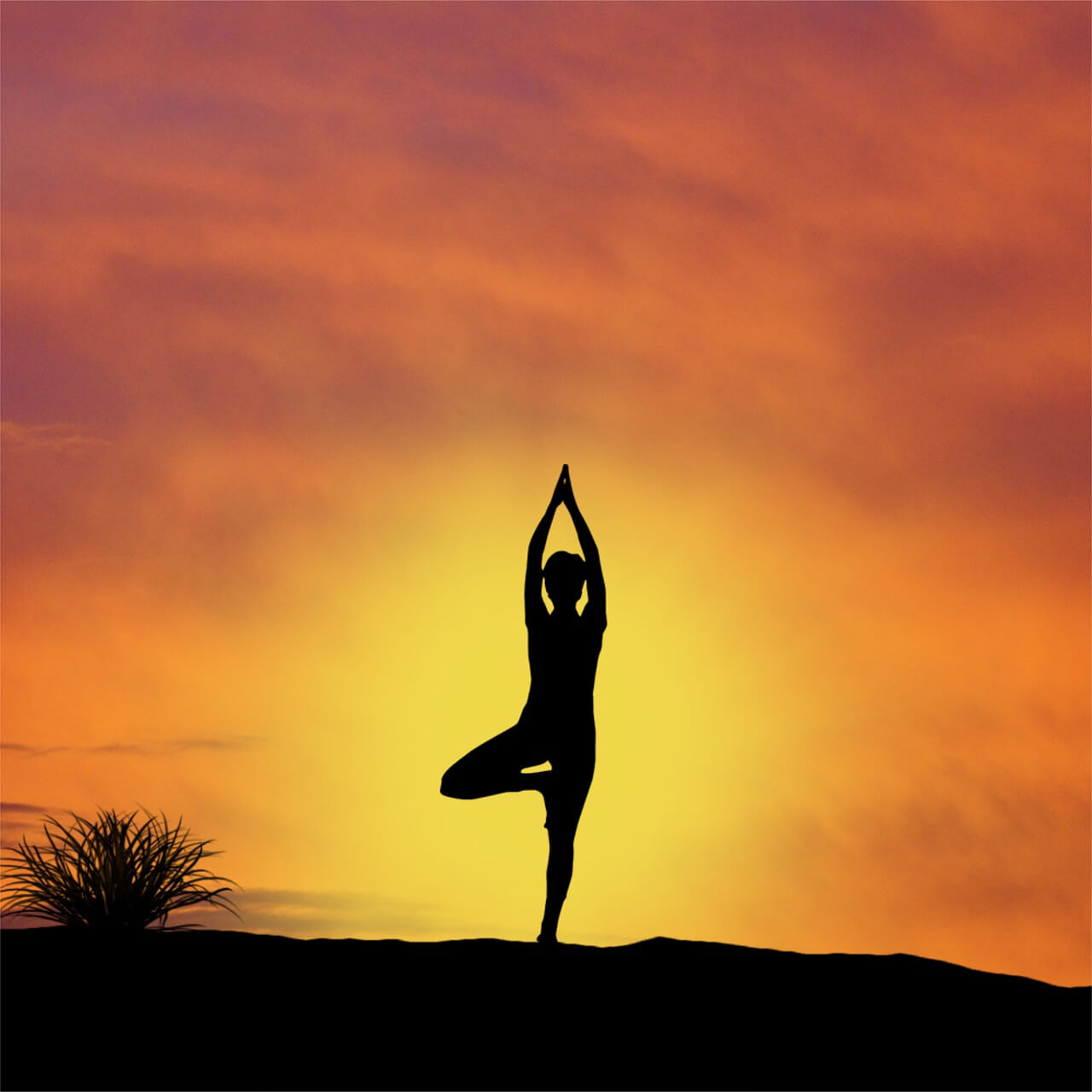Parts or Phases of Yoga
There are seven main parts/phases of yoga (especially hatha yoga).
 Parts/Phases of yoga
Parts/Phases of yoga- Yum
- Niyam (rules)
- Aasan and Mudra (posture)
- Pranayama
- Pratyahaar (withdrawal of senses)
- Dhyan (meditation)
- Samadhi (deep meditation)
According to some people there are eight limbs of yoga. As per them, after ‘pratyahara’ comes ‘dharana (concentration)’, and only then we go into ‘dhyan (meditation)’.
These are called ‘Ashtanga Yoga Siddhis’. Without them there would be no yoga. Maharishi Patanjali has also told about these eight limbs of yoga and has given permission to practice them. Among these Ashtangas (meaning 8 parts), ‘Asana’ and ‘Pranayama’ hold a special place in ‘Hatha Yoga’.
Yam
Yam means our attitude towards our environment and others.
Five yamas are mentioned. One can get benefited from these five yamas even if he/she is not practicing yoga.
The first of the five Yamas is ‘non-violence’, through which a person sees everyone as a part of self. Treating all the creatures of the world as one’s equal, not torturing, not harassing, not killing anyone is non-violence and this path of non-violence is for all.
We all know how useful and what a great virtue it is to speak truth and to conduct oneself with truthfulness. This is the second yama.
‘Asteya’ means absence of theft. Not committing theft, dishonesty and corruption is also a good virtue.
‘Brahmacharya’ takes the body and mind to the heights. It means not practicing or thinking about sexual things, and cleaning our mind of lust. Though it means a lot more.
Through ‘aparigraha’ greed, greed and selfishness are renounced.
Niyam (rules)
Niyam is similar to Yam. It means attitudes toward ourselves, e.g. keeping oneself clean by regular bathing, brushing, etc. By following the niyams (rules), the control of both body and mind becomes easy.
Some Yogacharyas (Yog teachers) do not consider Yama-Niyama necessary for ‘Hatha Yoga’. But it is good for a hatha yogi to follow these rules and regulations. Those who do not consider it necessary for yoga, are missing out the fact that yog is not just a physical exercise, but a path to salvation.
Yama and Niyama are universal. They are not affected by country and time. People of all countries and religions benefit from them.
Asanas and Mudras (physical postures)
Asanas come after Yama and Niyama. Asana is an important part of yoga. All types of yoga give special importance to ‘Asanas’. For the accomplishment of Hatha Yoga, many types of asanas are mastered as physical exercises.
Mudra is an integral part of Hatha Yoga. They are of many types too. The main mudras according to ‘Hatha Yoga Pradipika’ are as follows:
- Mahamudra
- Mahabandh
- Mahabedh
- Khechari
- Uddiyan Bandh
- Moolbandh
- Jalandharbandh
- Vipreet Karni
- Vajroli
- Shakti Chalini
These mudras are supposed to stop old age and death. These mudras bestow the eight divine opulences spoken by Yogishvara Adinath. All those divine siddhis you can attain by doing assanas and mudras are dear to the ‘siddhas’ and even rare to the deities.
These mudras are also very useful because of being very helpful in the accomplishment of various other phases/parts of yoga, and also keeping the body of the yogi healthy and healthy.
Pranayama (restraint or expansion of the breath)
Pranayama is the fourth part of Hatha Yoga. While asanas were all about control over the body, ‘Pranayama’ means control of the life force, by controling our breathing. This is also an important part of yoga. In Raj Yoga, this is accomplished before Pratyahara.
 Note
NoteDhauti, Vasti, Neti, Nauli, Trataka and Kapalbhati are the ‘Shatkarmas’. They should be practiced by a yogi. Parts of niyama, asanas, and pranayama are included in ‘Shatkarma’.
When pranayama is accomplished, pratyahara, that is, the removal of the senses from the outside world, is done. Thereafter, ‘dharana’ is done, which means that the mind is engaged/focussed on some object or part of the body. Then there is ‘dhyana’ and later there is samadhi. In this way yoga is perfected. Now, let us study about these other steps of yoga.
Pratyahaar (withdrawal of the senses)
It comes in the fifth place in ‘Hatha Yoga’. By its practice, the extroverted senses are made introverted by removing them from their respective external subjects.
Its special description is found in ‘Hatha Yoga’ texts. According to ‘Gorakh Samhita’ - Just as a tortoise wraps up its head and legs and pulls them in its own shell, similarly the yogi by practicing pratyahara removes the senses from their external objects and merges them into the soul.
Dhyaan (Meditation)
The sixth part of Hatha Yoga is meditation. According to Hatha Yoga Pradipika, there are two types of meditation:
- Sthool (Physical) - It is called physical meditation when the seeker is concentrated on a picture, idol or figure.
- Sukshma (Subtle) - On attaining meditation in the physical, we move towards the subtle, the soul, the non-physical God.
 Note
NoteAccording to some people there are eight limbs of yoga. According to them, after pratyahara comes dharana, and only then there is dhyaan (meditation). There is a very slight difference between Dharana and Dhyana. Dharana means concentration, i.e. here a yogi tries to increase his/her concentration. Dhyana means meditation.
Samadhi (Deep Meditation)
Like Raj Yoga, the last part of Hatha Yoga is Samadhi. It implies deep meditation, or complete integration with the almighty.
It is accepted as the last part/phase in all types of yogas. Because there is no movement or action after samadhi. A sadhak or yogi in this stage loses the sense of ‘self’, his ‘ego’ and gets closer to the almighty. The only next step left after samadhi is ‘mukti’, or liberation.
